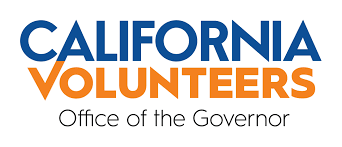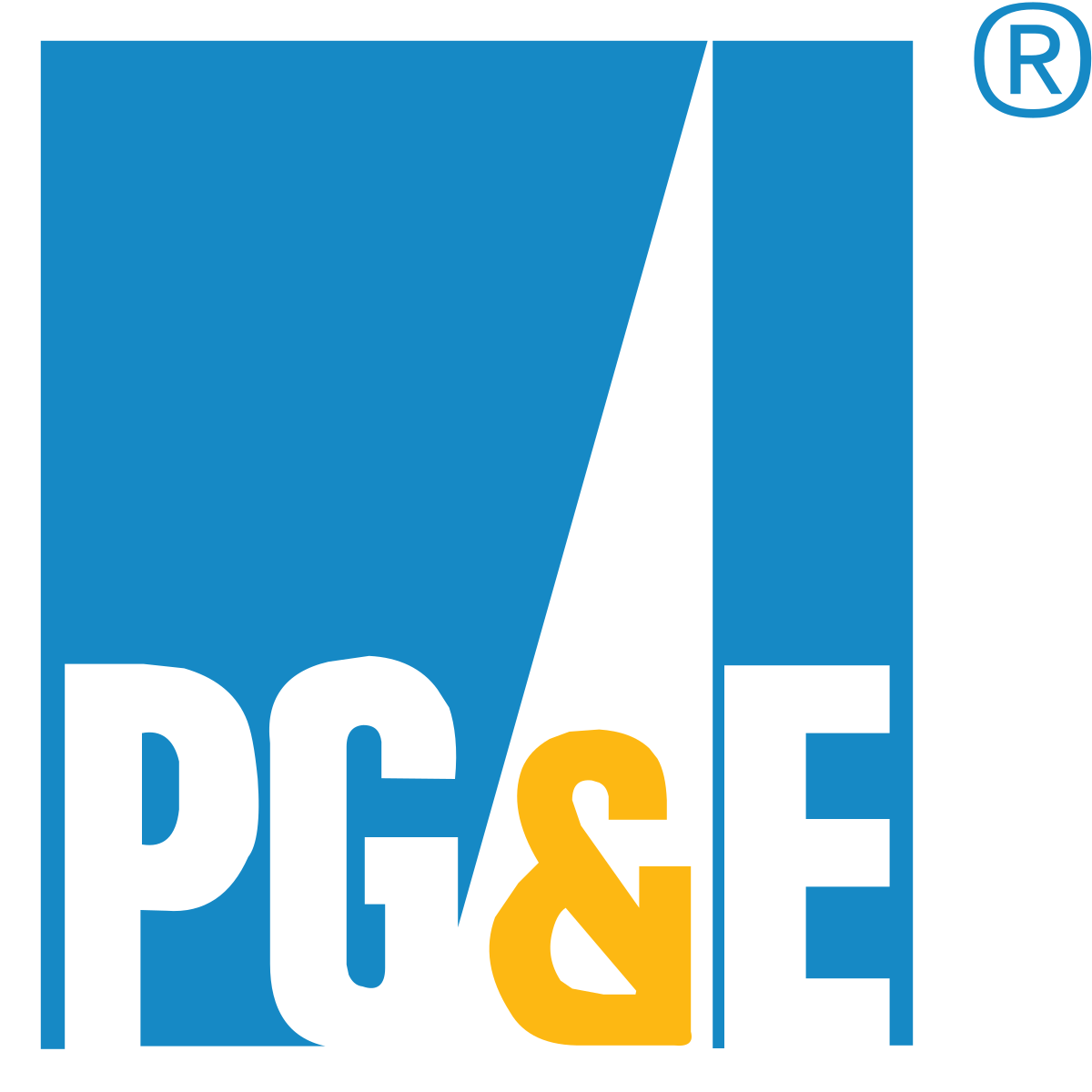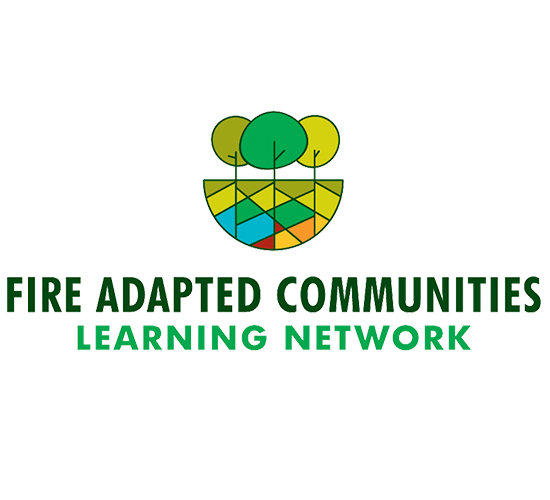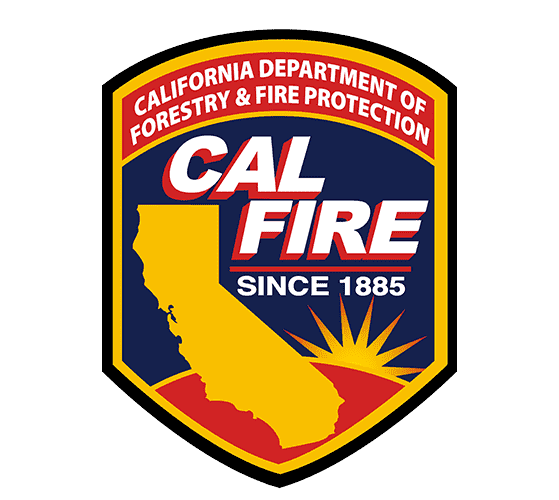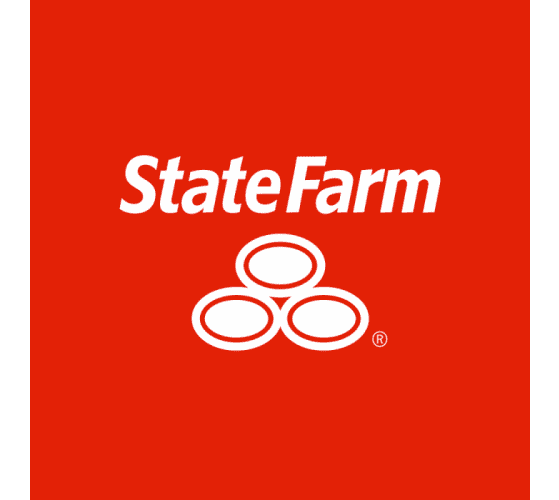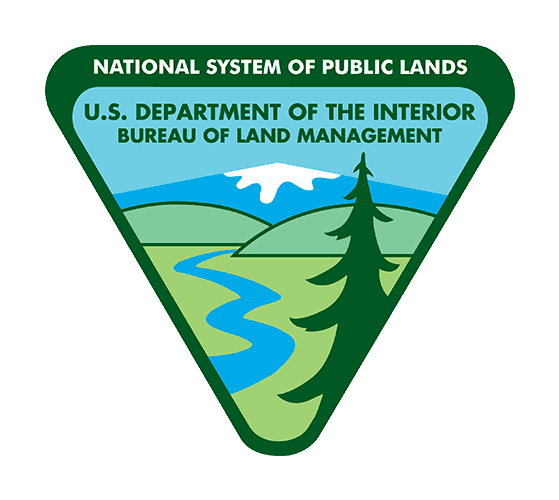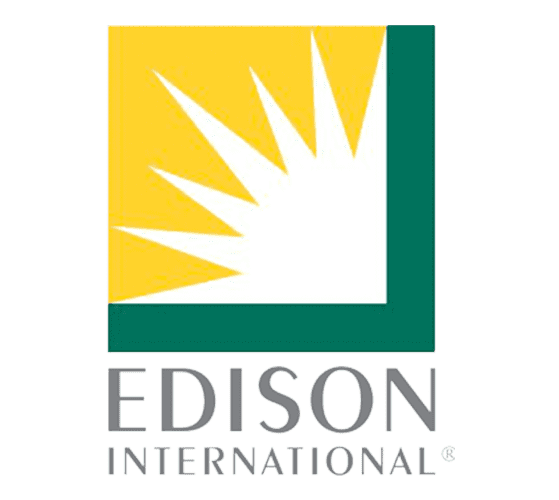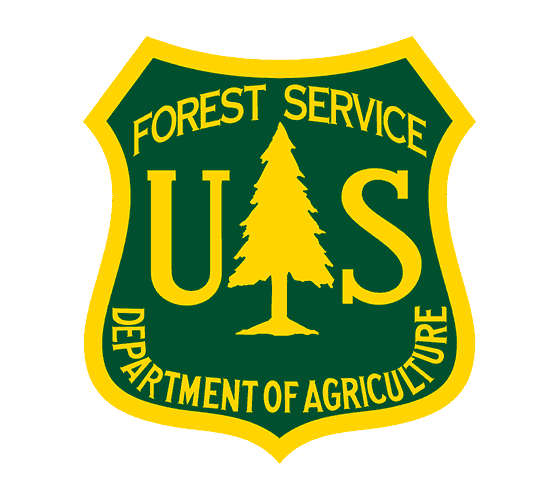For detailed information on the current grant cycle, see the Grant Application Handbook. The Handbook contains program descriptions, eligibility information, application deadlines, and other resources.
How do I access and apply to the California Fire Safe Council (CFSC) Grants Clearinghouse?
The CFSC Grants Clearinghouse is an online grant program. Prospective applicants must first create a free online account in ZoomGrants, our new online grant software, to begin the process. To create an account, click here. You will be prompted to create an account if you do not already have one. It is strongly recommended that you download and read the Request for Applications (RFA) and the Grant Application Training handbook available on the website. These documents outline the many rules and requirements of the CFSC Grants Clearinghouse and offer insight into developing a competitive grant application.
How can I get help?
Refer to the contacts page in the Grant Application Training handbook for grant manager contact information, call California Fire Safe Council at (866) 372-2543 or go to Contact a Grant Specialist in your region for additional contact information.
Can my organization have multiple accounts?
No. Accounts are based on your organization name, so each organization may only have one account. Multiple email addresses can be linked to one account if you wish to have multiple people notified of account activity.
How will the information I submit online be protected?
Your user name and password limit who can see your information. It’s your choice whether to share your user name and password with others. Only those with your username and password can access your account.
Why does the CFSC Grants Clearinghouse exist?
The CFSC Grants Clearinghouse is a program of the California Fire Safe Council. It is an online grant application process that makes it easier to find and apply for wildfire prevention grants to support community projects. Originally, federal agency members of the California Fire Alliance and CFSC Board of Directors spearheaded the development of the CFSC Grants Clearinghouse to assist in the achievement of the National Fire Plan by facilitating an open, collaborative process for grant funding. The CFSC Grants Clearinghouse expanded the playing field to more organizations by making it easier to find and apply for grants. It increased the collaboration among agencies because shared information and facilitated planning across agency boundaries demonstrated California’s needs and accomplishments to Congress.
Why does the CFSC Grants Clearinghouse only accept grant applications online?
Online applications control costs and reduce the amount of paper involved in grant writing. The CFSC Grants Clearinghouse also reflects the federal government’s focus on electronic government and simplifying the grants process. The Federal Financial Assistance Management Improvement Act calls for improving the effectiveness and performance of Federal grant programs; simplifying grant application and reporting requirements; improving the delivery of services to the public; and facilitating greater coordination among those responsible for delivering such services.
What is the CFSC Grants Clearinghouse process?
Under the CFSC Grants Clearinghouse, there is one deadline each cycle for all available funding. The applications give CFSC’s review committee the information they need to make preliminary funding recommendations. Projects that are selected for funding will move on to the second phase where applicant organization must provide additional information about their organizational capacity and eligibility. Projects that are not selected will remain on a hold list for consideration if additional funding becomes available later in the year.
How does the CFSC Grants Clearinghouse help government agencies?
The CFSC Grants Clearinghouse provides an efficient process by which agencies can meet their grant program objectives. CFSC manages the grant application process, funding process, documentation and reporting which reduces the need for agency staff and resources to be focused on grant management.
What is the funding cycle?
Although there is one deadline for grant applications, funding organizations have different funding cycles. Applicants whose projects are selected for funding will be notified of the appropriate cycle. In general, CFSC manages grants that last between 18-24 months. Applicants should be aware that funding is contingent upon congressional appropriations for federal grant programs. In some cases, a project may be selected for funding, yet if appropriations are lower than anticipated, CFSC may not be able to fund that project or reduce the funded amounts.
What are the scoring criteria and who makes the funding decisions?
An initial review will determine if a project can be considered for funding based on the initial screening and scoring criteria contained in the Request for Applications (RFA).
Applications completing the Initial Screening will then be reviewed by the grant review committee—an independent, volunteer panel of experts with varied backgrounds who have expertise in reviewing grants and in wildland fire protection issues.
During the review process, the grant review committee uses the scoring criteria listed in the RFA to score the projects, but that is not the only determining factor. Program requirements, budget, the need for a competitive process and reasonable geographic distribution are also used in the project selection.
The grant review committee recommends projects to the CFSC Board who approves a list of projects to move forward in the pre-award process. At that time, applicant organizations and fiscal sponsors must provide certain documents and certifications and undergo an organizational capacity risk assessment prior to receiving final approval of their grant. Until they receive a grant agreement from CFSC, they have not been officially approved for a grant award.
For more information on capacity see the grant pre-award process resources in the grant application handbook.
Fire Prevention Grant Terms Glossary
| A-133 Audit Requirement (Single Audit) | The requirement that a recipient or sub-recipient who expends over $500,000 in Federal funding in a single fiscal year complete an audit as described in Office of Management and Budget Circular A-133. This requirement provides for a “single audit” in the case that multiple Federal agencies are providing funding. |
| Accrued Expenditures | Charges incurred by a recipient during a given period requiring the provision of funds for: (1) goods and other tangible property received; (2) services performed by employees, contractors, sub-recipients, and other payees; and (3) other amounts becoming owed under programs for which no current services or performance is required. |
| Accrued Income | Sum of: (1) earnings during a given period from (i) services performed by the recipient, and (ii) goods and other tangible property delivered to purchasers; and (2) amount becoming owed to the recipient for which no current services or performance is required by the recipient. |
| Advance Payment | A payment made to a recipient either before outlays are made by the recipient or through the use of predetermined payment schedules. |
| Application Package (Grants) | A group of specific forms and documents which are used to apply for a specific grant funding opportunity. |
| Award | Financial assistance that provides support or stimulation to accomplish a public purpose. Awards include grants and other agreements in the form of money or property in lieu of money, by the Federal government to an eligible recipient. The term does not include: technical assistance, which provides services instead of money; other assistance in the form of loans, loan guarantees, interest subsidies, or insurance; direct payments of any kind to individuals; and contracts which are required to be entered into and administered under Federal procurement laws and regulations. |
| Beneficiaries | Those receiving the benefit of a grant-funded program. In the case of Federal awards, the intended beneficiaries are members of the public. |
| Cage Code | A five-character code which identifies companies doing, or planning to do business with the Federal government and is assigned through the Central Contractor Registration. |
| Cash Contributions | A recipient’s cash that is committed to a project, including the outlay of money contributed to the recipient by third parties. |
| Catalog of Federal Domestic Assistance (CFDA) | An online database of all Federal programs available to state and local governments, Federally-recognized Indian tribal governments, territories and possessions of the United States, domestic public, quasi-public, and private profit, and nonprofit organizations and institutions, specialized groups, and individuals. |
| Catalog of Federal Domestic Assistance (CFDA) Number | The identifying number that a Federal program is assigned in the Catalog of Federal Domestic Assistance (CFDA). |
| Central Contractor Registration (CCR) | The Central Contractor Registration (CCR) is the primary vendor database for the U.S. Federal government. CCR validates applicant information and electronically shares the secure and encrypted data with the Federal agencies’ finance offices to facilitate paperless payments through Electronic Funds Transfer (EFT). |
| Closeout | The process by which the awarding agency determines that all applicable administrative actions and all required work of the award have been completed by the recipient and the awarding agency. |
| Code of Federal Regulations (CFR) | The Code of Federal Regulations (CFR) is the codification of the general and permanent rules published in the Federal Register by the executive departments and agencies of the Federal Government. It is divided into 50 titles that represent broad areas subject to Federal regulation. Each volume of the CFR is updated once each calendar year and is issued on a quarterly basis. |
| Contract | A formal document that describing the agreement to provide services or goods. A procurement contract under an award or sub-award, and a procurement subcontract under a recipient’s or sub-recipients contract. |
| Condition Class | A fire regime condition class is a classification of the amount of departure from the natural regime. The three classes are based on low, moderate, and high departure from the central tendency of the natural (historical) regime. This departure results in changes to one or more of the following ecological components: vegetation characteristics (species composition, structural stages, stand age, canopy closure, and mosaic pattern); fuel composition; fire frequency, severity, and pattern; and other associated disturbances (e.g. insect and disease mortality, grazing, and drought) |
| Cooperative Agreement | An award of financial assistance that is used to enter into the same kind of relationship as a grant; and is distinguished from a grant in that it provides for substantial involvement between the Federal agency and the recipient in carrying out the activity contemplated by the award. |
| Cost Principles | The portion of the Code of Federal Regulations (CFR) contained in 2 CFR 230, 225, and 230 and the Federal Acquisition Regulations (FAR) 31.2 that describes the requirements of grant costs in terms of their allowability, reasonableness, and allocability. |
| Cost Sharing or Matching | The portion of project or program costs not borne by the Federal government. |
| Data Universal Numbering System (DUNS) | A unique nine-character identification number provided by the commercial company Dun & Bradstreet (D&B). |
| Date of Completion (end of grant period) | The date on which all work under an award is completed or the date on the award document, or any supplement or amendment thereto, on which awarding agency sponsorship ends. Under typical conditions, recipients have 30 days from the date of completion to report final expenses and accomplishments, and 90 days to pay expenses incurred before the date of completion. |
| Defensible Space | The area within the perimeter of a parcel where basic wildfire protection practices are implemented, providing the key point of defense from an approaching wildfire or escaping structure fire. The area is characterized by the establishment and maintenance of emergency vehicle access, emergency water reserves, street names and building identification, and fuel modification measures. |
| Disallowed Costs | Charges to an award that the awarding agency determines to be unallowable, in accordance with the applicable Federal cost principles or other terms and conditions contained in the award. |
| Discretionary Grant | A grant (or cooperative agreement) for which the Federal awarding agency generally may select the recipient from among all eligible recipients, may decide to make or not make an award based on the programmatic, technical, or scientific content of an application, and can decide the amount of funding to be awarded. |
| Earmark Grants | Earmark grants are grants that are appropriated by Congress prior to a peer review. The term “earmark” is a reference to the Congressional Record where the awards are written into the legislation specifically with the grant applicant’s name, activity, and dollar amounts. |
| Entitlements | A government program that guarantees and provides benefits to a particular group. |
| Environmental Compliance | The processes and approvals are necessary to comply with applicable environmental regulations. Federally funded grants awarded through the grants clearinghouse must comply with the Endangered Species Act, National Historic Preservation Act, and the Migratory Bird Treaty Act, as well as any applicable state and local laws and regulations. |
| Equipment | Tangible nonexpendable personal property, including exempt property, charged directly to the award and having a useful life of more than one year and an acquisition cost of $5,000 or more per unit. However, consistent with recipient policy, lower limits may be established. |
| Federal Share of Real Property, Equipment, or Supplies | The percentage of the properties or supplies acquisition costs and any improvement expenditures paid with Federal funds. This will be the same percentage as the Federal share of the total costs under the award for the funding period in which the property was acquired (excluding the value of third party in-kind contributions). |
| Fire Behavior | The manner in which fire reacts to the influences of fuel, weather, and topography. |
| Fire Regime | A natural fire regime is a general classification of the role fire would play across a landscape in the absence of modern human mechanical intervention, but including the influence of aboriginal burning (Agee 1993, Brown 1995). Coarse-scale definitions for natural (historical) fire regimes have been developed by Hardy et al. (2001) and Schmidt et al. (2002) and interpreted for fire and fuels management by Hann and Bunnell (2001). The five natural (historical) fire regimes are classified based on the average number of years between fires (fire frequency) combined with the severity (amount of replacement) of the fire on the dominant overstory vegetation. These five regimes include:
I – 0-35 year frequency and low (surface fires most common) to mixed severity (less than 75% of the dominant overstory vegetation replaced); II – 0-35 year frequency and high (stand replacement) severity (greater than 75% of the dominant overstory vegetation replaced); III – 35-100+ year frequency and mixed-severity (less than 75% of the dominant overstory vegetation replaced); IV – 35-100+ year frequency and high (stand replacement) severity (greater than 75% of the dominant overstory vegetation replaced); V – 200+ year frequency and high (stand replacement) severity. |
| Firewise | A national, multi-agency effort designed to reach beyond the fire service by involving homeowners, community leaders, planners, developers, and others in the effort to protect people, property, and natural resources from the risk of wildland fire before a fire starts. Firewise offers a series of practical steps that individuals and communities can take to minimize wildfire risks to people, property and natural resources. It emphasizes community responsibility for planning in the design of a safe community as well as effective emergency response, and individual responsibility for safer home construction and design, landscaping, and maintenance. |
| Fiscal Sponsor | A fiscal sponsor uses its eligible status or capacity to receive funding on behalf of another organization. As used by the California Fire Safe Council in the operation of the Grants Clearinghouse, a fiscal sponsor is an organization that assumes the legal responsibility for the management of grant funds awarded to another organization. |
| Fuel(s) | All combustible material, especially within the wildland/urban interface or intermix, including but not limited to, vegetation and structures. |
| Fuelbreak | A natural or manmade change in fuel characteristics that affects fire behavior so that fires can be more readily controlled. |
| Funding Opportunity Announcement | A publicly available document by which a Federal agency makes known its intentions to award discretionary grants or cooperative agreements, usually as a result of competition for funds. Funding opportunity announcements may be known as program announcements, notices of funding availability, solicitations, or other names depending on the agency and type of program. Funding opportunity announcements can be found at Grants.gov/FIND and on the Internet at the funding agency’s or program’s website. |
| Funding Period | The period of time when Federal funding is available for obligation by the recipient. |
| Grant | An award of financial assistance, the principal purpose of which is to transfer a thing of value from a Federal agency to a recipient to carry out a public purpose of support or stimulation authorized by a law of the United States (see 31 U.S.C. 6101(3)). A grant is distinguished from a contract, which is used to acquire property or services for the Federal government’s direct benefit or use. |
| Grant Manager | A person who performs the administrative processes required for the award of grant funding. The role of grant managers at CFSC includes providing training on the application process, tracking funding and scheduling payments, monitoring progress and performing site visits, providing information on allowable costs, tracking equipment, and project documentation, and documenting the completion and close out of projects. |
| Home Ignition Zone | The Home Ignition Zone principally determines a home’s ignition potential during an intense fire. The “Zone” includes the homes and their immediate surroundings. |
| In-Kind | Under a grant or cooperative agreement, in-kind contributions are items or services, not cash, that is necessary to the completion of a project and are provided by the recipient organization or its partners. |
| Management Review | In the case of grants awarded through CFSC, a management review is an evaluation of the recipient organization’s capacity to manage funds with a focus on their policies and procedures for accounting, purchasing, property management, personnel management, and travel. |
| Obligations | The amounts of orders placed, contracts and grants awarded, services received and similar transactions during a given period that require payment by the recipient during the same or a future period. |
| Office of the Inspector General (OIG) | Each of the Federal Cabinet Departments has an Office of the Inspector General that provides independent oversight and promotes accountability within the programs, operations, and management of the department agencies. |
| Organization | A grant applicant who is submitting a grant on behalf of a company, state, local or tribal government, academic or research institution, not-for-profit, or any other type of institution. |
| Outlays or Expenditures | Charges made to the project or program, which may be reported on a cash or accrual basis. |
| Pass-Through Entity | A non-Federal entity that provides a Federal Award to a sub-recipient to carry out a Federal program. |
| Personal Property | Property of any kind except real property. It may be tangible, having a physical existence, or intangible, having no physical existence, such as copyrights, patents, or securities. |
| Prior Approval | Written approval by an authorized awarding agency official evidencing prior consent. |
| Program Income | Gross income earned by the recipient that is directly generated by a supported activity or earned as a result of the award. |
| Progress Report | Periodic documentation of the budget status, accomplishments, and activities associated with a project including changes to the budget, project scope, schedule, and personnel. |
| Project Costs | All allowable costs, as set forth in the applicable Federal cost principles, incurred by a recipient and the value of the contributions made by third parties in accomplishing the objectives of the award during the project period. |
| Project Period (grant period) | The period established in the award document during which awarding agency sponsorship begins and ends. |
| Property | Real property, equipment, intangible property, and debt instruments. |
| Real Property | Land, including land improvements, structures, and appurtenances thereto, but excludes movable machinery and equipment. |
| Recipient | An organization receiving financial assistance directly from an awarding agency to carry out a project or program. |
| Scope Change | A change in the program activities under an award. For Federally funded projects, these require approval from the awarding organization. |
| Shaded Fuel Break (SFB) | Partial removal of live or dead vegetation for the purpose of reducing the intensity of fire behavior. A shaded fuel break retains some canopy cover while surface and ladder fuels are reduced or removed. |
| Site Visit | Site visits are made to recipient organizations by the awarding organization for a variety of purposes which may include visits to new recipients to evaluate their program and financial management systems, visits to view project progress, visits to help resolve problems or challenges, or visits to showcase a project’s successes. |
| Subaward (Subgrant) | An award of financial assistance in the form of money, or property in lieu of money, made under an award by a recipient to an eligible sub-recipient or by a sub-recipient to a lower tier sub-recipient. The term includes financial assistance when provided by any legal agreement, even if the agreement is called a contract, but does not include procurement of goods and services nor does it include any form of assistance which is excluded from the definition of award. |
| Subrecipient | The legal entity to which a sub-award is made and which is accountable to the recipient for the use of the funds provided. |
| Supplies | All personal property excluding equipment, intangible property, and debt instruments. |
| Suspension | A post-award action by the awarding agency that temporarily withdraws the agency’s financial assistance sponsorship under an award, pending corrective action by the recipient or pending a decision to terminate the award. |
| Termination | The cancellation of awarding agency sponsorship, in whole or in part, under an agreement at any time prior to the date of completion. |
| Third Party In-Kind Contributions | The value of non-cash contributions provided by non-Federal third parties. Third party in-kind contributions may be in the form of real property, equipment, supplies, and other expendable property, and the value of goods and services directly benefiting and specifically identifiable to the project or program. |
| Wildland-Urban Interface | Any area where wildland fuels threaten to ignite combustible homes and structures. The location where humans and their development meet or are intermixed with wildland fuels. |
